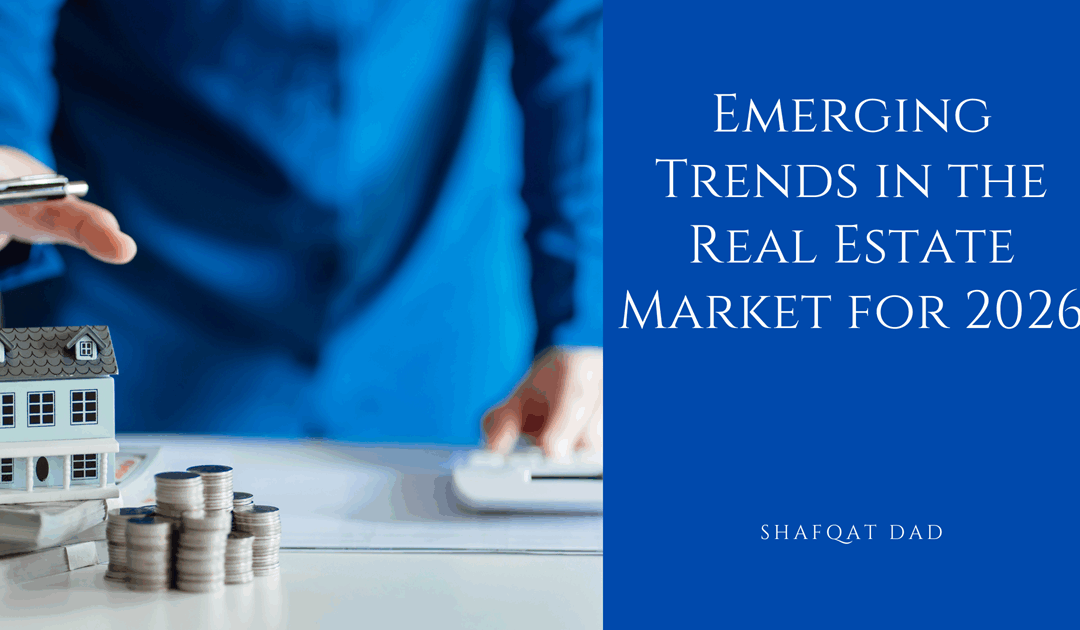As the real estate market continues to evolve, 2026 is poised to bring several notable changes that will redefine how properties are developed, sold, and managed. Driven by technological innovation, demographic shifts, and changing lifestyle preferences, the real estate landscape will likely look quite different from what it was just a few years ago. Staying ahead of these trends is crucial for investors, developers, agents, and buyers who want to make informed decisions in a rapidly transforming environment.
One of the most prominent trends in 2026 is the continued rise of remote and hybrid work models, which are reshaping the demand for residential spaces. More people are seeking homes with dedicated office space, flexible layouts, and access to high-speed internet. Suburban and semi-rural areas that offer more space and a better quality of life are experiencing increased demand, while urban centers are seeing shifts in occupancy and rental patterns. Developers are responding by designing homes that cater to the needs of remote workers, often incorporating co-working zones, smart lighting, and ergonomic features into residential projects.
Sustainability is another key trend gaining momentum across both residential and commercial real estate. Buyers and renters are increasingly prioritizing eco-friendly buildings that incorporate energy-efficient systems, sustainable materials, and green certifications. Governments and local authorities are also tightening regulations, encouraging builders to adopt green construction practices. In 2026, properties that align with environmental standards not only help reduce carbon footprints but also attract environmentally conscious clients who are willing to pay a premium for sustainability.
Technology is transforming every facet of the real estate transaction process. From virtual reality tours and AI-powered property matching to blockchain-based transactions, buyers and sellers now have access to tools that make the experience faster, more transparent, and less stressful. In 2026, we can expect to see greater integration of artificial intelligence in market analysis, helping professionals predict trends, evaluate risk, and optimize pricing strategies with remarkable accuracy. Smart contracts and digital escrow services will also streamline transactions, increasing trust and reducing the time it takes to close deals.
Another emerging trend is the growth of real estate tokenization. This innovative model allows properties to be divided into digital shares, making it easier for smaller investors to enter the market. Tokenized real estate opens up the possibility of fractional ownership, enabling more people to benefit from real estate appreciation without the need for traditional financing. Platforms offering tokenized investment opportunities are gaining popularity, especially among younger investors seeking diversification with lower entry barriers.
Housing affordability remains a challenge in many markets, leading to creative solutions in property development and ownership. In 2026, co-living spaces, modular homes, and build-to-rent communities are becoming more widespread. These models offer cost-effective housing alternatives while catering to the evolving needs of renters and first-time buyers. Modular construction methods, in particular, are reducing build times and labor costs, offering a viable path forward in cities facing housing shortages.
Another significant shift is the growing influence of Generation Z on the housing market. This tech-savvy and socially conscious group values convenience, connectivity, and ethical practices. They are driving demand for smart homes, integrated digital solutions, and properties located near vibrant, walkable communities. Gen Z’s preferences are shaping how properties are marketed and designed, with an emphasis on lifestyle over square footage.
The commercial real estate sector is also undergoing change, particularly in retail and office spaces. With more companies downsizing office footprints or transitioning to flexible leasing options, traditional office buildings are being reimagined. Mixed-use developments, incorporating residential, retail, and co-working spaces, are gaining traction. These spaces offer versatility and community-focused design, making them more attractive to both tenants and investors.
Moreover, real estate analytics will play an increasingly central role in decision-making. Predictive modeling, market sentiment analysis, and customer behavior tracking will provide valuable insights to real estate professionals. Access to real-time data empowers stakeholders to identify emerging hotspots, monitor market volatility, and align investments with long-term goals.
In 2026, the real estate market is defined by adaptability, innovation, and a greater focus on user experience. As the lines blur between living, working, and social spaces, developers and investors must prioritize flexibility, technology, and sustainability. By recognizing and embracing these trends, the real estate industry can meet the evolving needs of modern buyers and shape a smarter, more inclusive future.

